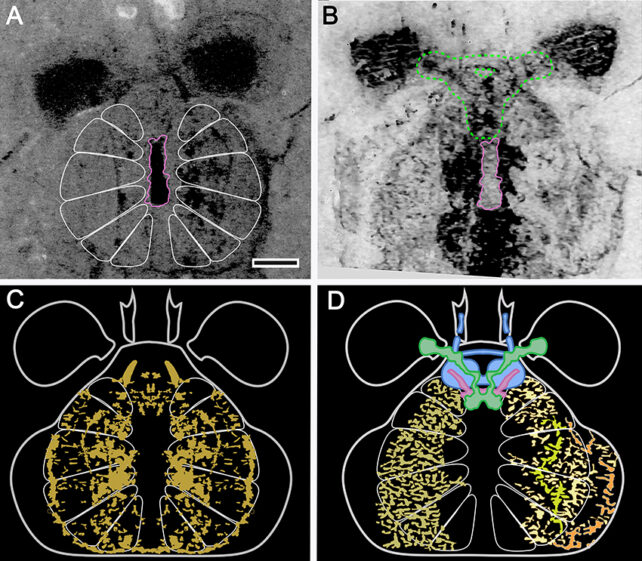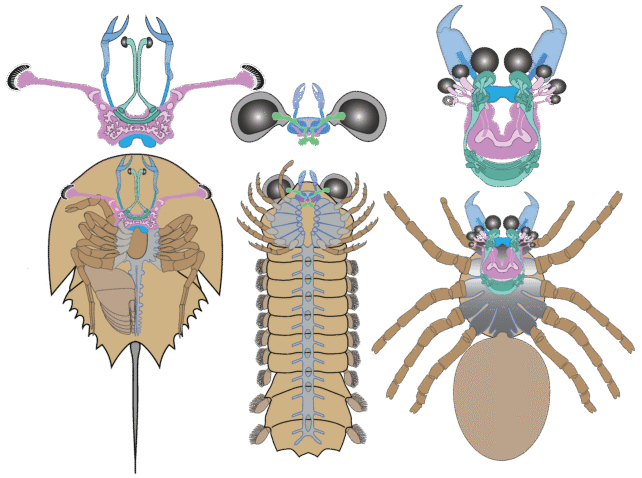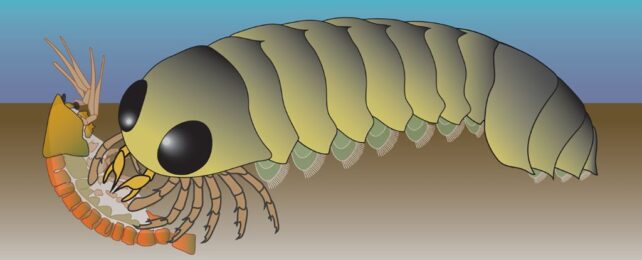The special brains of spiders may have started to evolve in the oceans, long before their ancestors crawled onto land.
A fresh look at a 500-million-year-old fossil by researchers from the University of Arizona and Lycoming College in the US and King's College London has revealed remarkable similarities between the brains of extinct marine arthropods and modern-day arachnids.
The discovery wades into controversial territory regarding the evolutionary origin of spiders and their relatives.
Today, spiders, scorpions, mites, and ticks are virtually all terrestrial, and the prevailing view is that these arachnids evolved from a common, land-dwelling ancestor.
Related: New Discovery of Deep Sea 'Spiders' Is Unlike Anything We've Seen Before
Where that ancestor came from is a whole other mystery. Arachnids on land are related to other 'chelicerates' in the ocean, like sea spiders and horseshoe crabs, but the fossil record is very patchy.
"It is still vigorously debated where and when arachnids first appeared, and what kind of chelicerates were their ancestors, and whether these were marine or semi-aquatic like horseshoe crabs," explains University of Arizona neuroscientist Nicholas Strausfeld.
The transition from sea to land is a big step for a little creature, no matter how many legs it has.
The oldest accepted remains of an arachnid are of a 430-million-year-old scorpion, a critter that lived on land. But new evidence suggests that arachnids as a whole may have started to diverge from other chelicerates long before that.
On the outside, Mollisonia symmetrica may not look very 'spidery'. It kind of resembles a pillbug with a bunch of little legs, and previously, it was thought to be an ancestor of horseshoe crabs.

Using light microscopy, researchers have now imaged the fossil's central nervous system and come across an unexpected find.
The nervous system of Mollisonia doesn't resemble that of a horseshoe crab or even a crustacean or insect. Instead, the pattern of radiating neural centers was flipped backward, like that of an arachnid.
"The arachnid brain is unlike any other brain on this planet," explains Strausfeld.
In the Mollisonia fossil, the unique nervous system seems to innervate numerous legs, as well as two pincer-like mouth parts, where modern spiders now have fangs.
"This is a major step in evolution, which appears to be exclusive to arachnids," says evolutionary neuroscientist Frank Hirth from King's College London.
"Yet already in Mollisonia, we identified brain domains that correspond to living species… "
That seems to be no coincidence. Upon further statistical analysis, Hirth and colleagues have found that arachnids probably didn't evolve similar structures to Mollisonia by accident; they were more likely inherited.
If the team is right, that puts Mollisonia at the base of the arachnid lineage, making it a sister to horseshoe crabs and sea spiders.
While still speculative, it's possible that the unique brain structure seen in the Mollisonia lineage helped its later successors survive on land.
Neural 'shortcuts' to the legs and pincers, for instance, could make it easier to control and coordinate complex movements, like walking or weaving webs.

"We might imagine that a Mollisonia-like arachnid also became adapted to terrestrial life making early insects and millipedes their daily diet," theorizes Strausfeld.
Perhaps it was the earliest arachnids on land that first drove insects to evolve wings and hence flight – and maybe, in turn, airborne prey led to the evolution of webs.
From the ocean floor to the treetops, the way that arachnids have adapted to the changing times is truly enviable.
The study was published in Current Biology.
